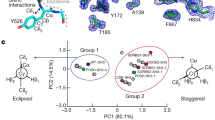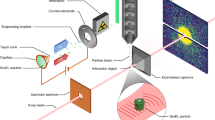Abstract
Protein folding problem as attracted structural biologists immensely (1). Till date, correlation between X-ray crystallographic and NMR data are considered to be the best methods for determining structure of intra-cellular proteins. Generating crystals and finding correct experimental conditions for NMR are largly a gamble and resultant data processing highly time consuming. Even if, a large number of laboratories around the world and India make crystals of protein but majority of them fail to generate crystallographic data less than or equal to 10A resolution with currently available instruments. This means that X-ray crystallographic data have been generated from protein crystals with non-uniform lattices. We believe that a large portion of (chain of amino acids) all proteins, be it an intra-cellular, transmembrane or extra-cellular proteins form uniform lattices following precise deterministic mathematical rules in natural condition inside cells or membranes or in extra-cellular conditions. This hypothesis has several advantages. First, stacking of protein chains like lattices (lattices of helix or beta-sheet etc.) allows a particular protein to resist forces of compression and relaxation. Secondly, it will be easier to expose hydrophobic and hydrophilic domains following a mathematical rule described in this paper. Barstar, Barnase and olfactory receptors (ORs) have 90, 110 and ~312 amino acids respectively. Using Young-Fibonacci graph area model, here we show that all naturally available protein folding problems can be solved or a preliminary idea about their secondary and tertiary structures can be predicted. This is absolutely necessary considering the fact that there are zillions of proteins present in the animal and plant world. The process of X-ray crystallography and NMR followed by computer modeling for elucidating the secondary and tertiary structures of these vast numbers of proteins might take hundreds of years.
Similar content being viewed by others
Article PDF
Author information
Authors and Affiliations
Corresponding authors
Rights and permissions
About this article
Cite this article
Goswami, A., Hassan, S. & Pal Choudhury, P. An attempt to understand Barstar, Barnase and Olfactory receptor protein folding problems using mathematical biological approach. Nat Prec (2010). https://doi.org/10.1038/npre.2010.4891.1
Received:
Accepted:
Published:
DOI: https://doi.org/10.1038/npre.2010.4891.1



